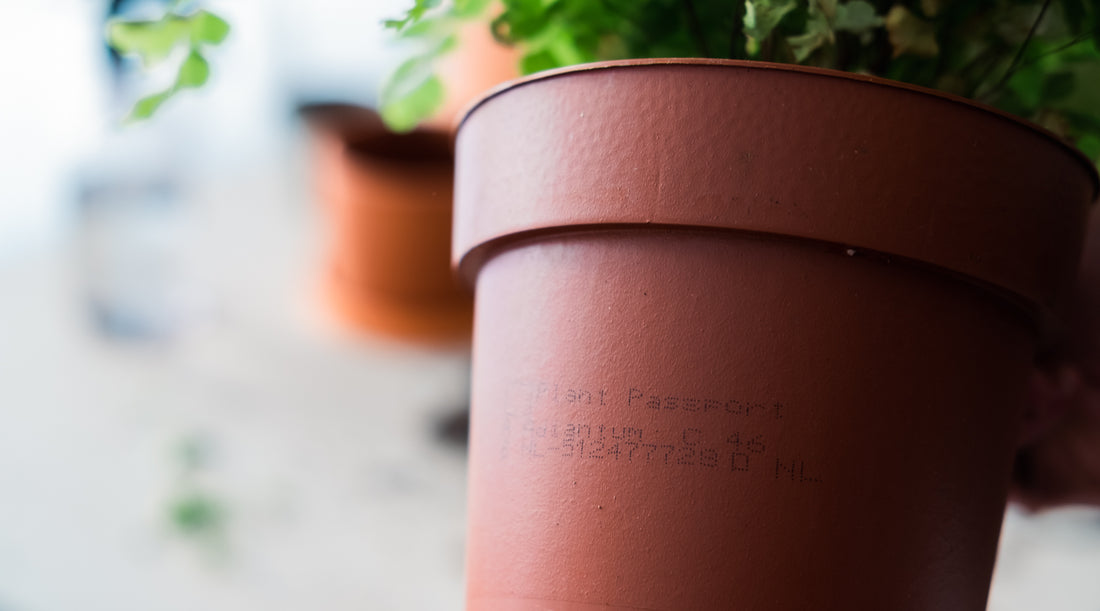
Eco-certifications and plant passports
If you’ve ever bought a plant in Europe you’ve probably come across the little plant passport (usually on the back of the label, or printed on the nursery pot). And perhaps some third party eco-certifications? If you’ve been wondering what it all means then continue reading!
Eco-certification schemes for houseplants
MPS (More Profitable Sustainability)
Dutch-based group MPS provide eco-certification for potted plants and flowers. Existing for 25 years MPS carry out independent audits and issue certification across the horticulture supply chain.
Veriflora
A Californian based group that offers sustainably grown certification for cut flowers and potted plants. The certification process is carried out by Scientific Certification Systems (SCS) Global Services. A third-party verifier of sustainability and environmental claims, it checks producer compliance with sustainability criteria. Its criteria include soil and water resource protection, energy efficiency, ecosystem protection and responsible agrochemical use.
Global Gap - GGN label
A global certifier for the agriculture industry, they also offer eco-certification for the floriculture industry (cut flowers and potted plants). One of the GGN’s criteria for certification is environmental and resource protection.

🤓 Side note
Most of these certification programs don’t mention houseplants specifically, but potted plants in general.
While looking at some of my own plant labels, I didn’t find any eco-certification. On a Calathea, the label mentioned that it had been grown sustainably and listed the name of the breeder and producer Gebr Valstar. So I looked up the website and found that his plants had indeed been certified by MPS.
Plant passport
The passport is an EU regulation and any plant that is traded within the EU must have an official passport. The plant passport is a biosecurity measure and is issued to improve traceability in the plant supply chain. The aim is to prevent the spread of pests and diseases. So in case an outbreak occurs, the plant's origins can easily be traced back to the source.
🤔 Just in the EU?
The plant passport is an EU law but there is an international standard for the global trade in plant products known as a phytosanitary certificate (PC). Like the plant passport, this requires exporters to fill out a form when trading plant products. This details the origin of the plant and the country it’s being shipped. It’s also for biosecurity reasons and is an official customs document so not something plant buyers will see.
How to read a plant passport?
The layout may look a little different, but they have added letters to head line all info:

Does the passport tell us anything about sustainability?
Not really no, the passport wasn’t designed with sustainability standards in mind. It does tell us where the plant was grown which gives us some insight into how far the plant has travelled (plant miles). But it doesn’t tell us how the plant was grown, pesticide use, what type of energy was used etc...
So it can’t be considered an eco-certification scheme as this requires independent third-party verification of sustainability criteria.
